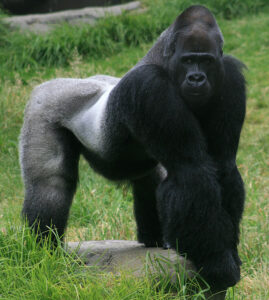Which gorilla species are in Uganda and Rwanda?
Famous world over, gorillas are actually ground-dwelling apes that are predominantly herbivores inhabiting the forests of central Sub-Saharan Africa. There are two gorilla species that are existent in the world and these are the Eastern gorillas and the Western gorilla. Both species are critically endangered. The two gorilla species are further divided into 4 subspecies which are the western lowland gorilla, Cross River gorilla, Mountain gorilla, and the Eastern lowland gorilla.
Of the four subspecies, Uganda and Rwanda are hosts to the Mountain gorillas. The mountain gorilla populations in these countries live in two different habitats which are the Virunga volcanic mountains which cross through Uganda, Rwanda, and Congo and as well survive in the Bwindi Forest. Within these habitats, the Mountain gorillas live in three national parks which are Bwindi Impenetrable National Park and Mgahinga Gorilla National Park in Uganda, and Volcanoes National Park in Rwanda.
About Mountain Gorillas
Mountain gorillas are herbivores that feed mostly on vegetation living within tropical forests. Mountain gorillas are part of the largest living primates and just like all the other gorillas share about 95-99 percent of their DNA with humans depending on what is included.

Mountain gorillas inhabit the Albertine Rift tropical forests of sub-Saharan Africa. Just their name depicts, mountain gorillas live in “mountains” on high altitudes rising to about 2,300 to 4,300 meters above sea level.
Mountain gorillas live in two populations one in the Virunga Volcanic Mountains and the other in the Bwindi forest. Mountain gorillas are listed Endangered on the IUCN Red List as of 2018 survey that depicted an increase from about 1,004-1,063 mountain gorillas. Being endangered means this population of Mountain gorillas is threatened with extinction and any severe threats can lead to their extinction.
With research, some primatologists speculate that the Mountain gorilla population of Bwindi forest could be different from that in the Virunga ranges.
This is because the Bwindi population is said to predict different characteristics which include moving for long distances in search of food, unlike the Virunga population. This research has not, however, been finalized.
Physically, the fur of a mountain gorilla is thicker and longer than that of other gorilla species, a factor that enables them to live in colder environments.
Just like fingerprints are unique to each human being, mountain gorillas can be identified by nose prints that are unique to each individual.
The structure of a male gorilla is estimated at an upright standing height of 150cm weighing about 195 kilograms. The females weigh much less than about 100kg and 130cm in height.
In comparison to their counterparts, the Eastern lowland gorilla, the mountain gorilla is smaller with adults having more pronounced bony crests on the top and back of their skulls which gives their heads a more conical shape.
Living in their natural habitat the surreal way of seeing mountain gorillas is by undertaking either an Uganda gorilla tour or gorilla trekking safari in Rwanda. Need to glimpse and come face to face with these giants, contact the Uganda gorilla Rwanda experts for any king of gorilla safari planning.




